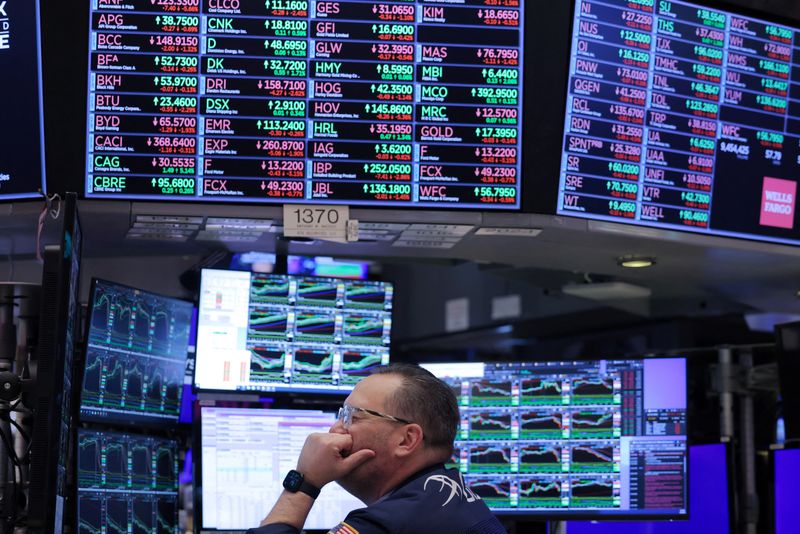Investing.com -- With the U.S. stock market close to record highs investors will be watching Friday’s jobs report for fresh insights into how the economy is faring ahead of the Federal Reserve’s December meeting. Investors will also get to hear from Fed Chair Jerome Powell and get an update on the outlook for global growth as tariff threats mount. Here's your look at what's happening in markets for the week ahead.
-
U.S. jobs report
Strong economic growth has driven stocks higher all year, despite concerns that inflation could rebound if the central bank lowers rates too far, undoing two years of progress in curbing price pressures.
A repeat of September’s blowout jobs report could disrupt expectations for future Fed rate cuts, threatening to undermine a key support for the stock rally.
Last week’s minutes from the Fed's latest policy meeting revealed a lack of consensus among officials on the path of future rate cuts.
Economists are expecting the economy to have added 202,000 jobs in November after disruptions from strikes and hurricanes led to weakness in October’s report.
-
Powell comments
Fed Chair Jerome Powell is due to take part in a moderated discussion at the New York Times DealBook Summit on Wednesday and investors will be closely watching for any comments on the strength of the labor market and the inflation outlook or how much the Fed may cut intertest rates at its upcoming December meeting.
Apart from Powell, several other Fed officials are scheduled to make appearances during the week including Governors Christopher Waller and Michelle Bowman, New York Fed President John Williams, St. Louis Fed President Alberto Musalem, San Francisco Fed President Mary Daly, Cleveland Fed President Beth Hammack and Chicago Fed President Austan Goolsbee.
- Tariff threat
Last week President-elect Trump jolted markets when he threatened to impose 25% tariffs on all products from Mexico and Canada and an additional 10% on goods from China as soon as he is inaugurated on January 20th.
The pledge has raised fears of a trade war between the U.S. and two of its biggest trading partners. The auto sector is particularly vulnerable to higher tariffs as it utilizes a highly integrated supply chain across the U.S., Canada, and Mexico.
Meanwhile, analysts think Beijing could implement fresh stimulus measures to offset the economic drag of a trade war and several say the ultimate result could be an acceleration of China's high-tech self-sufficiency drive.
Investors have been pricing in expectations that Trump's pro-business policies could spur economic growth and corporate profits. However, many economists fear that tariffs will stoke inflation, slow the pace of the Fed's rate cuts and weigh on global growth.
- OECD Outlook
The OECD will publish its latest Economic Outlook, containing analysis and projections for the world economy on Wednesday.
In its September forecast the Paris-based organization said it expected the global economy to grow 3.2% both this and next year, nudging up its 2024 forecast from 3.1% previously while leaving 2025 unchanged.
With inflation heading towards central bank targets, the OECD projected that the Fed’s main interest rate would ease to 3.5% by the end of 2025 from 4.75%-5% currently and European Central Bank would cut to 2.25% from 3.5% now.
- Oil prices
Oil prices ended last week around 3% lower amid easing concern over supply risks from the Israel-Hezbollah conflict and the prospect of increased supply in 2025 even as OPEC+ is expected to extend output cuts.
The OPEC+ group comprising the Organization of the Petroleum Exporting Countries and allies including Russia delayed its next policy meeting to Dec. 5. OPEC+ is expected to decide on a further extension to production cuts at the meeting.
Last month OPEC lowered its forecast for global oil demand growth for 2024 and 2025 amid economic weakness in top importer China, as well as in India and other regions.
The International Energy Agency, meanwhile, expects global oil supply to exceed demand in 2025 even if cuts remain in place from OPEC+.
